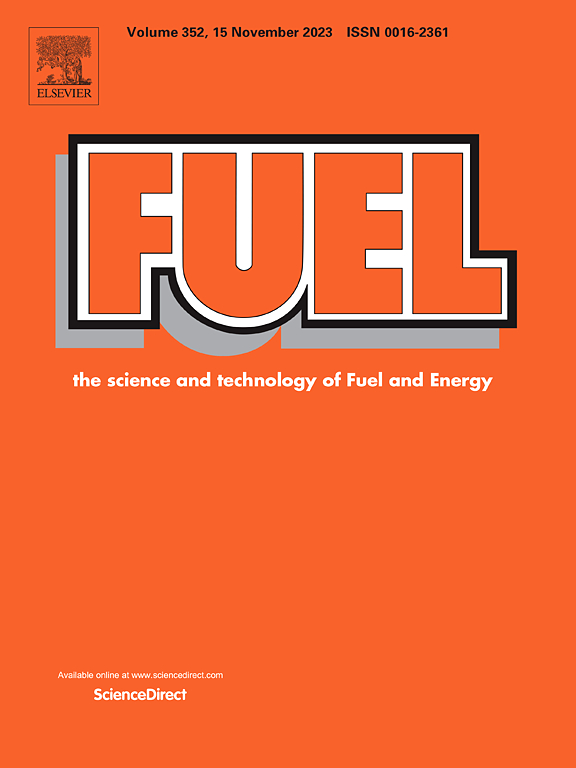Optimization of ultrasonic-assisted electrodeposition for high-performance CQDs-PPy/NPG composite electrodes in supercapacitors
IF 6.7
1区 工程技术
Q2 ENERGY & FUELS
引用次数: 0
Abstract
In this study, carbon quantum dots-polypyrrole/nanoporous gold (CQDs-PPy/NPG) composite electrodes were developed using ultrasonic-assisted electrodeposition with ultrasonic power levels ranging from 50 W to 200 W. The effects of ultrasonic power on the structural and electrochemical performance of the electrodes were systematically investigated. The electrode prepared at 150 W achieved a specific capacitance of 673.6F/g at a scan rate of 10 mV/s and 627.1F/g at 100 mV/s, reflecting a rate capability of 93.1 %. In contrast, the electrode prepared at 50 W demonstrated a specific capacitance of 437.8F/g at 10 mV/s and 251.0F/g at 100 mV/s, underscoring the considerable improvement in capacitance with higher ultrasonic power. Galvanostatic charge–discharge (GCD) tests at a current density of 5 A/g showed that the 150 W sample achieved a charging time of 408 s and a discharging time of 395 s, corresponding to a coulombic efficiency of 96.8 %. This composite electrode also exhibited excellent cycling stability, retaining 94.2 % of its initial capacitance after 20,000 cycles. Furthermore, it demonstrated an energy density of 513.7 Wh/kg at a power density of 5 W/kg. These findings suggest that optimizing ultrasonic power, particularly at 150 W, significantly improved the dispersion of CQDs and PPy, resulting in enhanced electrochemical performance. This composite emerges as a promising candidate for advanced supercapacitor applications. Furthermore, the CQDs-PPy/NPG composite was integrated into an asymmetric supercapacitor (ASC) using activated carbon (AC) as the negative electrode, achieving a high energy density of 42.8 Wh/kg at a power density of 2000 W/kg.
超级电容器中高性能CQDs-PPy/NPG复合电极的超声辅助电沉积优化
本研究采用超声辅助电沉积技术,制备了碳量子点-聚吡咯/纳米孔金(CQDs-PPy/NPG)复合电极,超声功率范围为50 ~ 200 W。系统地研究了超声功率对电极结构和电化学性能的影响。在150 W下制备的电极在扫描速率为10 mV/s时的比电容为673.6F/g,在100 mV/s时的比电容为627.1F/g,反映出93.1%的倍率能力。相比之下,在50 W下制备的电极在10 mV/s下的比电容为437.8F/g,在100 mV/s下的比电容为251.0F/g,表明更高的超声功率可以显著提高电容。电流密度为5 a /g的恒流充放电(GCD)测试表明,150w样品的充电时间为408 s,放电时间为395 s,库仑效率为96.8%。该复合电极还表现出优异的循环稳定性,在20,000次循环后仍保持94.2%的初始电容。此外,在功率密度为5w /kg的情况下,其能量密度为513.7 Wh/kg。这些结果表明,优化超声功率,特别是在150 W时,可以显著改善CQDs和PPy的分散,从而提高电化学性能。这种复合材料是先进超级电容器应用的有前途的候选者。此外,将CQDs-PPy/NPG复合材料以活性炭(AC)作为负极集成到非对称超级电容器(ASC)中,在2000 W/kg的功率密度下实现了42.8 Wh/kg的高能量密度。
本文章由计算机程序翻译,如有差异,请以英文原文为准。
求助全文
约1分钟内获得全文
求助全文
来源期刊

Fuel
工程技术-工程:化工
CiteScore
12.80
自引率
20.30%
发文量
3506
审稿时长
64 days
期刊介绍:
The exploration of energy sources remains a critical matter of study. For the past nine decades, fuel has consistently held the forefront in primary research efforts within the field of energy science. This area of investigation encompasses a wide range of subjects, with a particular emphasis on emerging concerns like environmental factors and pollution.
 求助内容:
求助内容: 应助结果提醒方式:
应助结果提醒方式:


